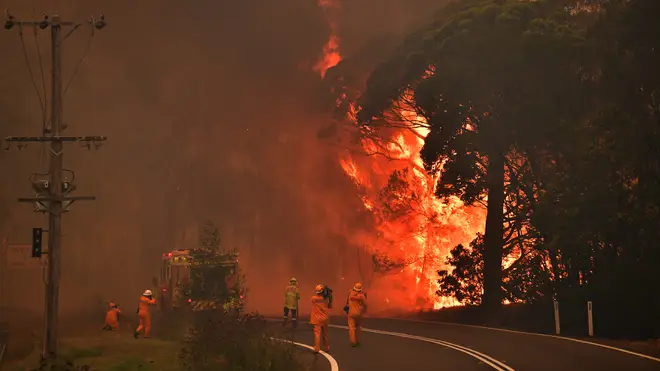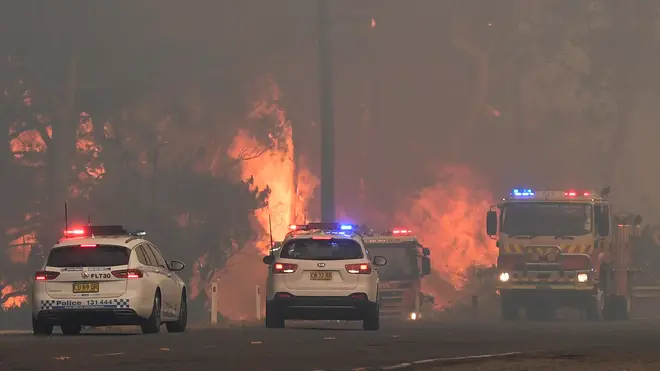
Simon Marks 3pm - 7pm
19 December 2019, 07:40

A week-long state of emergency has been declared in Australia’s New South Wales as high temperatures threaten to fuel the ongoing bushfire crisis.
The country saw it's all-time temperature record broken on Wednesday as the national average temperature reached 40.9C.
With around 100 wildfires blazing more than 2,000 firefighters were trying to tackle the flames as support from the military is called in as well as backup from US and Canadian teams .
Around 7.4 million acres of land have burnt over the last few months and fires have seen six people killed and almost a thousand homes destroyed by the flames.
New South Wales Premier Gladys Berejiklian said authorities were concerned with the extreme conditions.
At 5.30pm there are 106 fires burning, 53 are not yet contained, 2 are at Emergency Warning. It has been a very challenging day for the 2,500 firefighters currently in the field. Crews are continuing to work hard to protect homes on some firegrounds. #nswrfs #nswfires pic.twitter.com/MVqWr18qQV
— NSW RFS (@NSWRFS) December 19, 2019
"With extreme wind conditions, extreme hot temperatures, we have a good idea, a good sense, of where the most concerning areas are, but again when you've got those turbulent conditions, embers and spot fires can occur very unpredictably," she told reporters as she announced a seven-day state of emergency.
EMERGENCY WARNING Gospers Mountain (Lithgow and Hawkesbury LGA) A southerly change has impacted the Gospers Mountain fireground & is pushing the fire north.
— NSW RFS (@NSWRFS) December 19, 2019
Fire crossing the Bells Line of Road at Bilpin. If in the area monitor conditions. Follow advice from firefighters. #nswrfs pic.twitter.com/qHcZ93FKyt
The last state of emergency ran for seven days in mid-November amid “catastrophic” fire risk and was the first implemented in NSW since 2013.
Central Sydney reached a maximum of 39 degrees Celsius (102 Fahrenheit) on Thursday, while outer suburbs scorched at 42 Celsius (108 F).
A statewide total fire ban announced on Tuesday will remain in place until midnight on Saturday.
The annual Australian fire season, which peaks during the southern hemisphere summer, started early after an unusually warm and dry winter.
Hospitals have recorded a 10% increase in visits from patients with respiratory conditions during the past week.
The Australian Medical Association has recommended people keep hydrated, cool and out of the sun.
Wildfires are also burning in Queensland, South Australia and Western Australia.

The unprecedented conditions have reignited the debate on whether Australia’s conservative government has taken enough action on climate change. Australia is the world’s largest exporter of coal and liquefied natural gas.